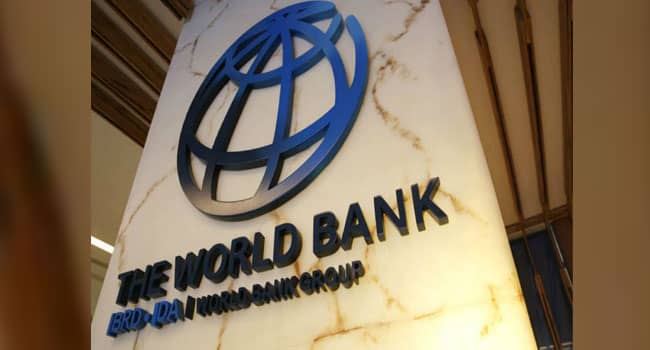The World Bank has downgraded its global economic growth forecast for 2025, warning that ongoing trade tensions and policy uncertainty largely fueled by U.S. tariff actions are taking a significant toll on economic prospects worldwide.
In its latest Global Economic Prospects report released Tuesday, the World Bank cut its projection for global GDP growth to 2.3%. a noticeable drop from the 2.7% estimate made in January. This marks one of the weakest growth outlooks in nearly two decades excluding periods of global recession.
“This is the slowest pace we’ve seen in 17 years, outside full-blown global downturns,” said Indermit Gill, the bank’s Chief Economist. He noted that the sharp forecast revision reflects growing fragmentation in global trade and elevated policy uncertainty, particularly as economic powerhouses like the U.S. and China wrestle with unresolved trade disputes.
The report follows recent moves by U.S. President Donald Trump to impose a blanket 10% tariff on imports from nearly all of America’s trading partners, with the potential for more increases by July. While a temporary reduction in tariffs between the U.S. and China offered some relief, the broader implications of ongoing trade disruptions have raised red flags for global markets.
Although advanced economies are expected to bear the brunt of the current slowdown, the World Bank warned that developing nations face a more complex challenge. Many rely heavily on commodity exports, and with commodity prices predicted to remain low through 2026, their economic resilience could be severely tested.
Gill explained that around 60% of low and middle-income countries could be hit with a “toxic mix” of declining prices and increased market volatility factors that could deepen inequality and stall development.
Looking ahead, the World Bank projects that global GDP growth will average just *2.5% across the 2020s*, marking the slowest decade of growth since the 1960s. While high-income nations may recover to pre-pandemic levels by 2027, *developing economies could remain 6% behind*, with many struggling to recoup the economic damage inflicted by recent years except for China, which is expected to fare better.
“If these trends continue unchecked, it could take some countries more than 20 years to fully recover from the setbacks of this decade,” Gill warned.
In addition to slowing growth, the bank also revised *inflation forecasts upward*, further complicating the global recovery picture. Gill urged governments to act swiftly to manage inflation risks and adopt more balanced trade policies to prevent deeper economic harm.
He called for *greater global coordination*, starting with the G20, to eliminate trade barriers and reduce tariff differentials not just with the U.S., but among all trading nations.
“Simply focusing on U.S. relations isn’t enough,” he said. “Nations need to liberalize trade policies across the board and convert limited bilateral deals into broader agreements that address regulatory and market access issues.”
The World Bank’s warning aligns with similar recent downgrades from other global institutions. Earlier this month, the *OECD* lowered its own 2025 growth estimate from 3.1% to 2.9% highlighting the impact of escalating U.S. tariffs. The International Monetary Fund also cut its global outlook in April reducing its growth forecast from *3.3% to 2.8%*
With the world economy* increasingly shaped by policy decisions rather than market forces, experts say the path forward depends heavily on diplomatic breakthroughs and comprehensive trade reform.





